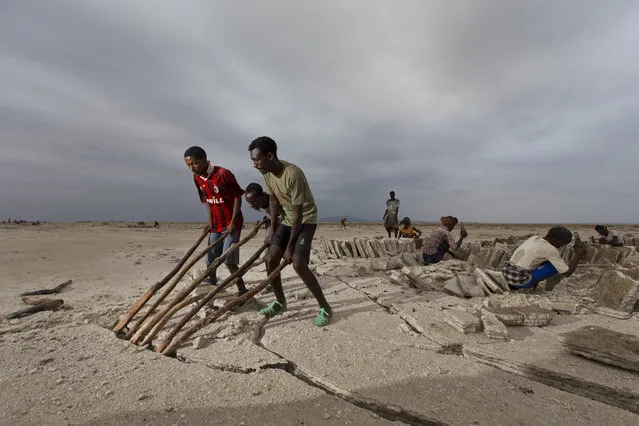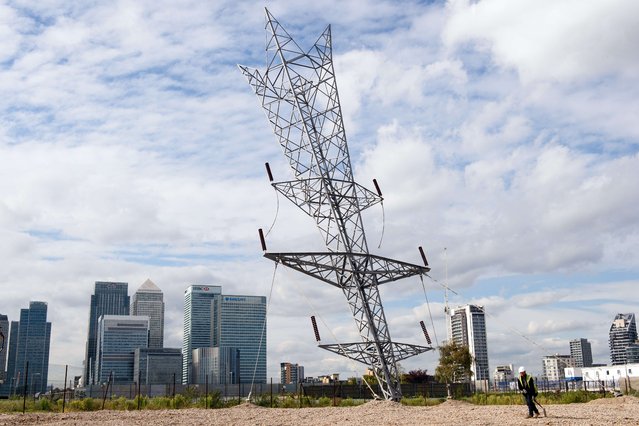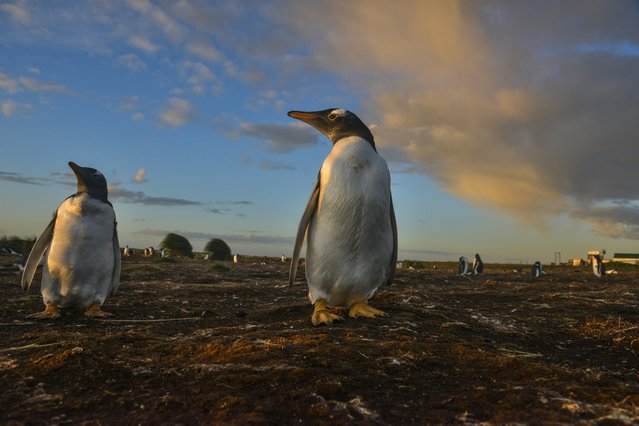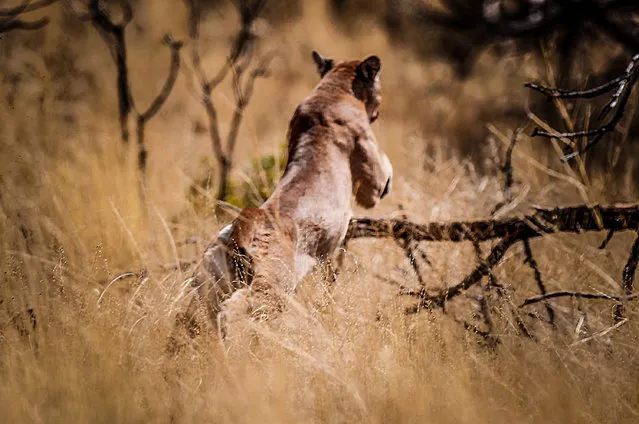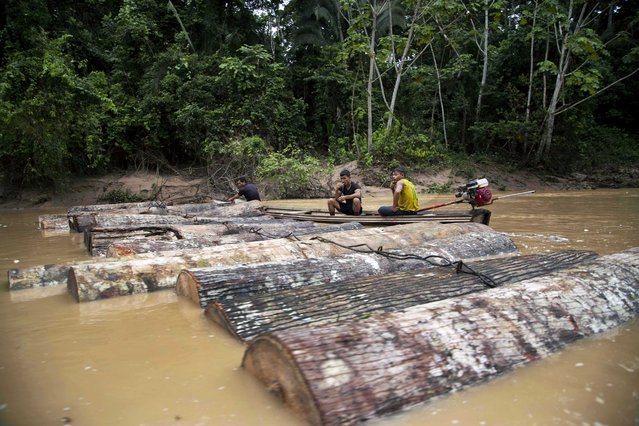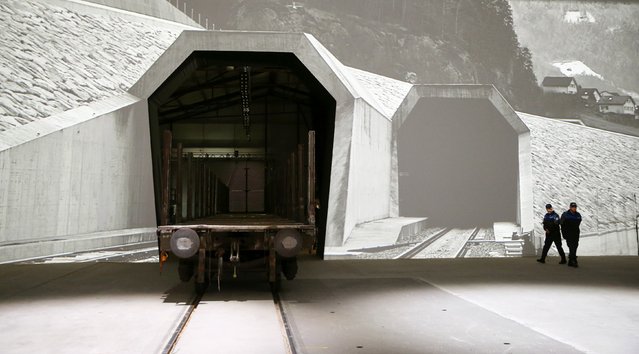
Swiss police officers stand beside of mock gates of the NEAT Gotthard Base Tunnel inside the event hall for the upcoming opening ceremony near the town of Erstfeld, Switzerland May 31, 2016. The celebrations of the opening of the Gotthard Base Tunnel will start on June 1, 2016. With a length of 57 km (35 miles) crossing the Alps, the Gotthard Base tunnel is the world's longest train tunnel. (Photo by Arnd Wiegmann/Reuters)
01 Jun 2016 12:14:00,post received
0 comments

